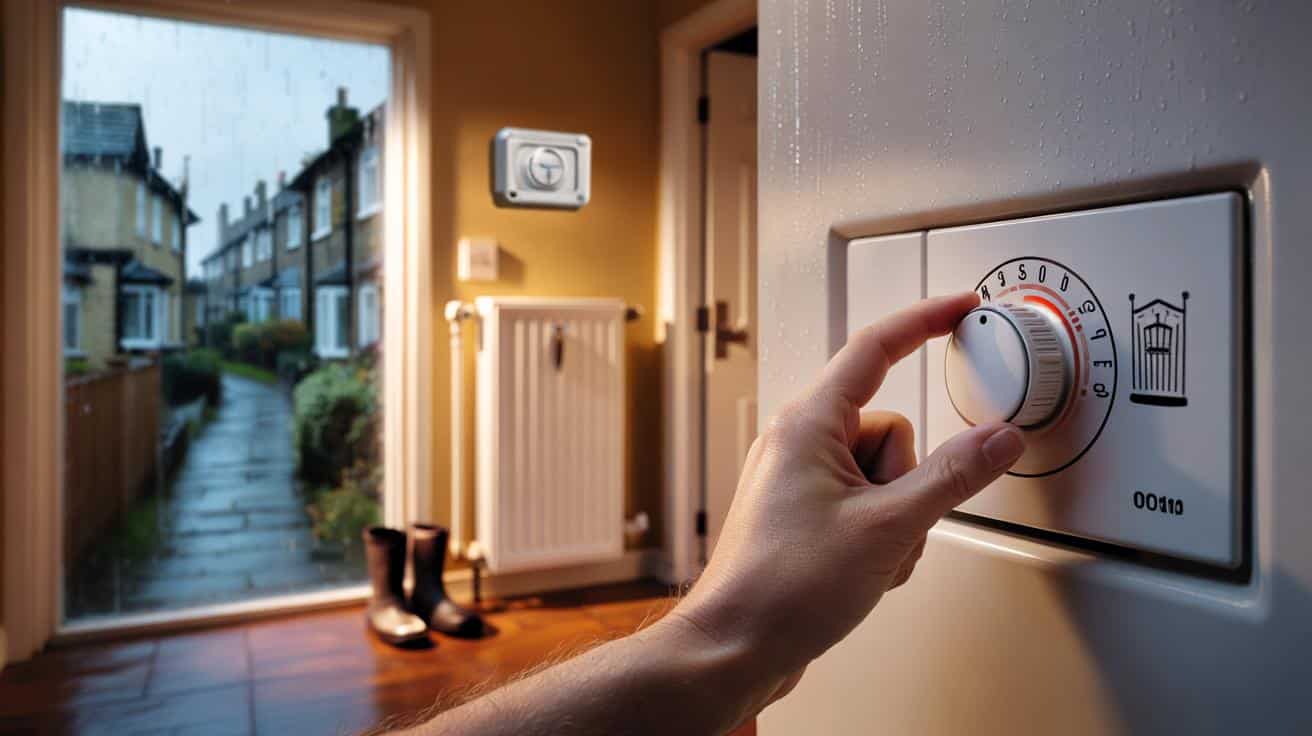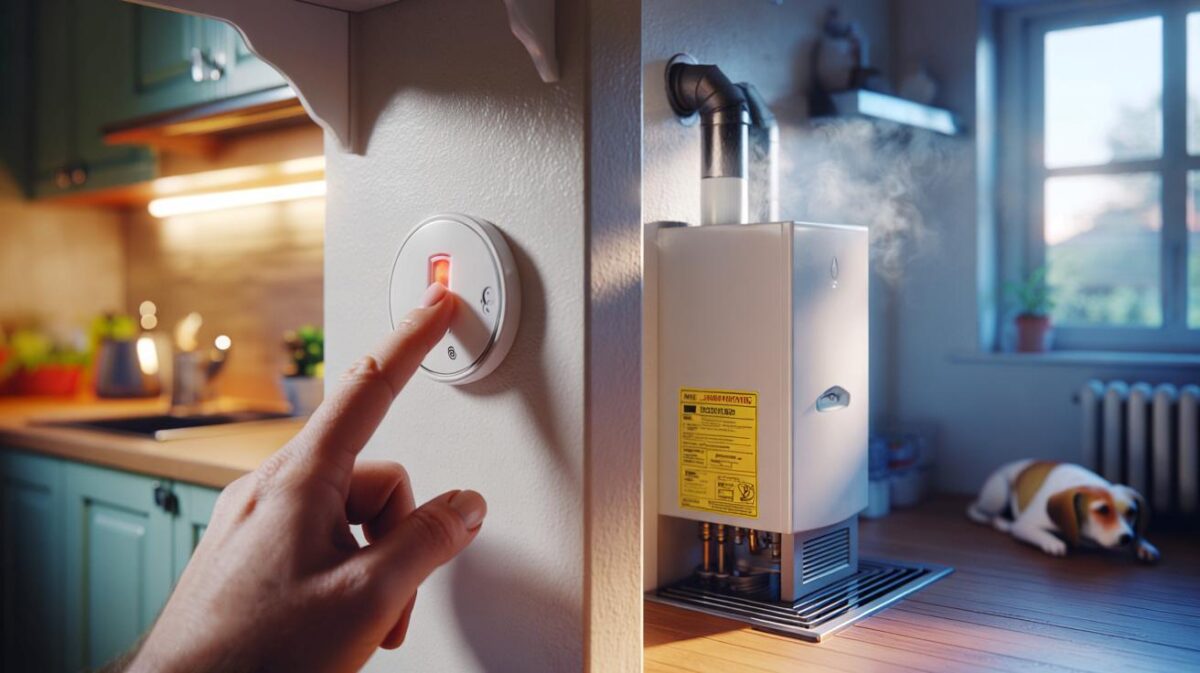It feels comforting. It sounds powerful. It’s also quietly draining your account. The fix is not a new boiler or a smart gadget. It’s a tiny change on a dial most of us never touch.
The hallway is chilly and still. You come in with a shiver, shoes wet, shopping bags digging into your fingers. Someone stabs the thermostat up to 24°C like a volume knob. The boiler surges, radiators hiss, and there’s a moment of relief — like you’ve tamed the weather with a twist of plastic.Ten minutes later, the radiators click off. The room is half warm, the air oddly stuffy, and your gas meter is dancing a little jig. You do it again, louder this time. *Your fingers hover over that mysterious boiler dial.*Here’s the bit no one tells you.
The costly mistake hiding in plain sight
Most UK homes with gas use a condensing boiler. The big mistake? Treating your thermostat like a volume knob and leaving the boiler’s flow temperature cranked high. When that flow temperature sits at 70°C or 80°C, the boiler blasts heat fast, then short-cycles — on, off, on, off — guzzling gas in the process. The room often ends up unevenly warm. Your bill climbs. And you’re stuck in a loop of “give it a blast” that feels effective but isn’t.
Look at any winter evening on a typical street in Leeds or Leicester. Steam gusts from flues, curtains twitch, and folks play radiator roulette: kitchen baking, bedrooms icy. In trials run by energy groups and boiler makers, simply lowering boiler flow to around 55–60°C cut heating gas use by roughly 6–12%. That’s not pocket change. For many households, that adds up to £100–£250 a year, more for bigger places with tired insulation. It works because the boiler finally does what it was designed to do.
Condensing boilers earn their name by condensing water vapour in the flue gases, reclaiming heat that old boilers threw away. For that to happen, the return water from your radiators needs to come back cooler — generally below the mid‑50s. When your flow temperature is set lower, radiators run a bit gentler for longer. The return pipe runs cooler, the boiler condenses properly, and you unlock free heat from the flue. The room warms more evenly. The boiler stops that frantic stop‑start dance. **Lower flow temperature, longer run time, lower bills.**
How to stop it and start saving
Here’s the move: change the boiler’s radiator flow temperature — not the wall thermostat. On many combi boilers you’ll see two icons: a tap for hot water, a radiator for heating. Tap the radiator button. Use the arrows or dial to bring the number down to ~55°C. If you’ve got a system boiler and a hot water cylinder, keep the cylinder at 60°C for hygiene, then set the heating flow to 55–60°C. Leave the room stat around 18–20°C. Let the boiler run steadier. Give it an hour on cold starts. Comfort follows.
Common snags pop up in the first week. You might think it’s “not working” because the rads don’t feel scorching. That’s the point — they’ll be warm for longer instead. Don’t slam the thermostat up to compensate. Give the system time, and nudge by 1°C if you need. Avoid shutting radiators in unused rooms completely; leave them cracked so the system balances. Keep furniture and curtains clear of panels. Drying clothes on rads? That steals heat and adds moisture. Soyons honnêtes : personne ne fait vraiment ça tous les jours — but even splitting a load across a rack helps.
“Set the flow to the mid‑50s and let your home glide up to temperature. Stop chasing spikes. You’ll feel the difference in the room — and in your bill,” says Dan, a heating engineer in Nottingham who’s tweaked hundreds of boilers since last winter.
- Quick check: Feel the two pipes under a radiator. If the return is nearly as hot as the flow, you’re not condensing much. Lower the boiler flow or ask for a balance.
- Radiator balance: A one‑time tweak of valves so each room heats evenly. Worth it in older homes.
- Smart tip: If you’ve got a learning thermostat, pair a lower flow temp with a longer preheat window.
- Hot water: Keep cylinders at 60°C. That’s separate from the radiator setting.
- Outside weather compensation: If your boiler supports it, this clever sensor lowers flow temp on milder days automatically.
A warmer home, without the sting
There’s something quietly satisfying about heat you don’t have to chase. The house hums instead of groans. Rooms feel even, like a jumper that fits instead of a jacket you keep shrugging off. You stop wrestling with the thermostat and start trusting a calmer rhythm. The bill reflects that lighter touch by the end of the month.We’ve all had that moment when you stand in the hallway at 6am, wondering if winter will win and if you can justify another hour of heating. This tweak gives you a better hand to play. It’s not a silver bullet — drafts still bite, insulation still matters — but it’s a lever you control. **Heat the person, not the empty room.** And maybe share this with the mate who swears their boiler “only works on max.”
| Point clé | Détail | Intérêt pour le lecteur |
|---|---|---|
| Lower boiler flow temperature | Set radiator flow to ~55–60°C for space heating | Unlocks condensing efficiency and steadier comfort |
| Stop “blast and coast” heating | Avoid spiking the thermostat; let rooms warm gradually | Cuts short‑cycling that wastes gas and money |
| Small habits, big payback | Unblock rads, gentle schedules, consider balancing | Real‑world savings worth £100–£250 a year |
FAQ :
- What is boiler flow temperature?It’s the temperature of the water your boiler sends to the radiators. Lowering it helps the boiler condense and recover extra heat, which trims gas use.
- Will my home feel colder if I drop it to 55–60°C?Rooms warm a little slower but end up just as cosy. The heat is smoother and lasts longer, rather than spiking then fading.
- Does this work if I have a hot water cylinder?Yes for heating. Keep your cylinder at 60°C for hygiene, and set the heating circuit to ~55–60°C. They are separate settings on most systems.
- What if I try this and some rooms stay chilly?Start with a small nudge up on the flow temp, then look at radiator balancing and clear airflow. A quick balance often fixes stubborn rooms.
- I’m getting a heat pump soon — is this still relevant?Absolutely. Heat pumps love low flow temperatures. Getting used to lower‑and‑longer heating now makes the transition smoother later.







